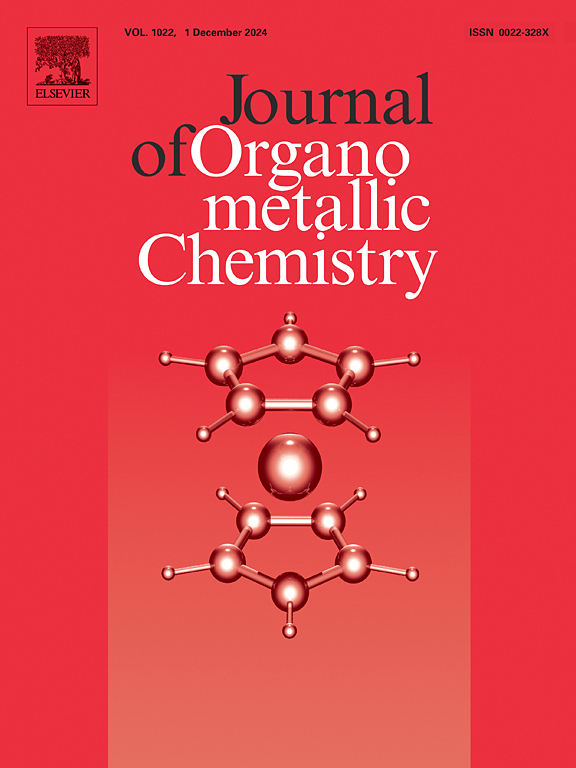硼化合物作为创新的关键驱动力:探索其在环境修复、可持续农业、先进生物医学应用和绿色化学中的作用
IF 2.1
3区 化学
Q3 CHEMISTRY, INORGANIC & NUCLEAR
引用次数: 0
摘要
近年来,硼化合物因其独特的电子特性和在治疗、生物医学、环境和农业等领域的广泛应用而引起了研究人员的极大关注。另一方面,硼化合物成本低、合成简单、稳定性好,在温和的反应条件下与不同分子形成疏水和静电相互作用,在许多应用领域具有潜在的应用前景,在未来具有广泛的应用前景。本文主要包括四个部分:硼的催化作用;它的治疗潜力,包括抗癌、抗炎和抗菌特性;它在生物传感器中的作用;它在水和废水处理、废物管理和回收方面的应用;以及它在农业中的意义,特别是在土壤健康、施肥和植物生理学方面。此外,本综述从多个角度对硼进行了深入的考察,在认真总结了精心挑选的近期研究的同时,提供了全面的见解,很可能对未来的研究起到更大的积极作用。虽然硼化合物在环境修复、可持续农业、先进生物医学应用和更优先的绿色化学等领域取得了重大进展,但仍需要新的研究来合成新的硼基化合物并阐明其性质。本文章由计算机程序翻译,如有差异,请以英文原文为准。

Boron Compounds as Key Drivers of Innovation: Exploring Their Role in Environmental Remediation, Sustainable Agriculture, Advanced Biomedical Applications, and Green Chemistry
Boron compounds have attracted significant attention from researchers in recent years due to their exceptional electronic properties and wide applicability in therapeutic, biomedical, environmental, and agricultural fields. On the other hand, boron compounds, which are low-cost, easy to synthesize, and stable, have the potential to be used in many application areas due to the hydrophobic and electrostatic interactions they form with different molecules under mild reaction conditions, and thus they appear as promising molecules for a wide range of different applications in the future. This review consists of four main sections, covering boron's catalytic role; its therapeutic potential, including anti-cancer, anti-inflammatory, and antimicrobial properties; its role in biosensors; its applications in water and wastewater treatment, waste management, and recycling; and its significance in agriculture, specifically in soil health, fertilization, and plant physiology. Moreover, this review provides an in-depth examination of boron from multiple perspectives, offering comprehensive insights while carefully summarizing recent studies selected with meticulous attention and is very likely to play a greater active role in the future studies. Although boron compounds have made significant progress in areas such as environmental remediation, sustainable agriculture, advanced biomedical applications, and higher priority green chemistry, new studies are still needed to synthesize new boron-based compounds and elucidate their properties.
求助全文
通过发布文献求助,成功后即可免费获取论文全文。
去求助
来源期刊

Journal of Organometallic Chemistry
化学-无机化学与核化学
CiteScore
4.40
自引率
8.70%
发文量
221
审稿时长
36 days
期刊介绍:
The Journal of Organometallic Chemistry targets original papers dealing with theoretical aspects, structural chemistry, synthesis, physical and chemical properties (including reaction mechanisms), and practical applications of organometallic compounds.
Organometallic compounds are defined as compounds that contain metal - carbon bonds. The term metal includes all alkali and alkaline earth metals, all transition metals and the lanthanides and actinides in the Periodic Table. Metalloids including the elements in Group 13 and the heavier members of the Groups 14 - 16 are also included. The term chemistry includes syntheses, characterizations and reaction chemistry of all such compounds. Research reports based on use of organometallic complexes in bioorganometallic chemistry, medicine, material sciences, homogeneous catalysis and energy conversion are also welcome.
The scope of the journal has been enlarged to encompass important research on organometallic complexes in bioorganometallic chemistry and material sciences, and of heavier main group elements in organometallic chemistry. The journal also publishes review articles, short communications and notes.
 求助内容:
求助内容: 应助结果提醒方式:
应助结果提醒方式:


